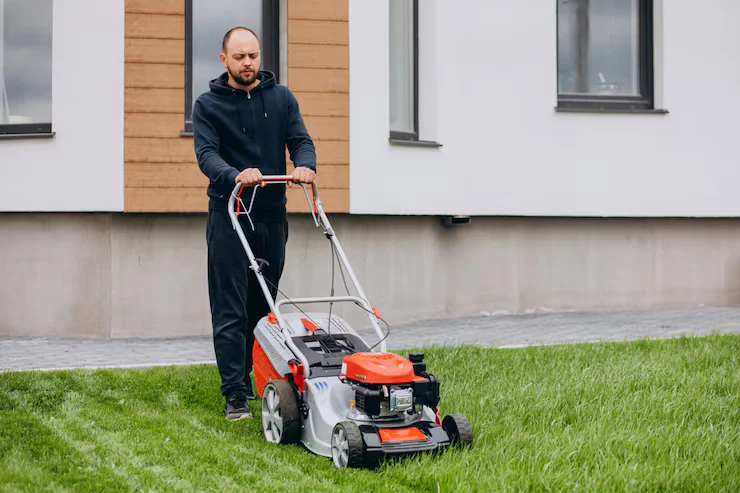A well-maintained lawn mower is essential for achieving that perfectly trimmed lawn. However, if your Troy Bilt mower starts leaving uneven cuts or vibrating excessively, it’s a sign that something is wrong. These issues not only impact the quality of your lawn but can also lead to more serious mechanical problems if left unchecked. Let’s break down the common causes and solutions to get your mower back in shape.
Common Causes of Uneven Cuts and Vibration
Uneven cuts and excessive vibrations in Troy Bilt mowers usually stem from a few key issues. These include dull or damaged blades, improper blade installation, worn-out belts, deck misalignment, or debris buildup. Each of these factors can throw off your mower’s balance and cutting efficiency.
Blade Condition: Sharp or Dull?
One of the most common reasons for uneven cutting is a dull or damaged blade. Over time, Troy Bilt mower blades lose their sharpness due to repeated contact with grass, dirt, and small debris. If your Troy Bilt mower leaves patches of uncut grass or creates a ragged, torn look, it’s time to inspect your blades.
A study by the University of Missouri Extension found that dull mower blades tear grass rather than cut it cleanly, leading to increased susceptibility to disease and dehydration. Experts recommend sharpening your blades after every 25 hours of use. If there are visible nicks, cracks, or severe wear, replacing them is the best option.
Incorrect Blade Installation
Did you recently replace your blades? Incorrect installation is another common culprit. Mower blades have a specific orientation, and installing them upside down or at an incorrect angle can cause uneven cutting patterns. Ensure that the cutting edge faces the direction of rotation and that the blade is securely fastened.
Additionally, loose blades may cause excessive vibration. Tighten the blade bolts to the manufacturer’s recommended torque setting using a wrench to eliminate unnecessary movement.
The Role of the Mower Belt in Blade Performance
A worn or loose mower belt can significantly impact how the blades perform. Troy Bilt mowers rely on a system of belts to drive the blades efficiently. When these belts wear out or stretch over time, the blades may not spin at the proper speed, leading to inconsistent cutting.
Interestingly, studies show that replacing worn-out belts can improve mower efficiency by up to 15%. If you notice slipping, squealing, or reduced blade rotation, inspect the belt for fraying, cracks, or slackness. Replacing it with a high-quality belt can enhance durability and cutting precision.
Deck Misalignment: A Hidden Issue
If your Troy Bilt mower is cutting unevenly, the issue might not be with the blades at all—it could be the mower deck. A misaligned deck tilts the blades at an angle, causing one side to cut lower than the other.
To check for deck misalignment:
- Park the mower on a flat surface.
- Measure the distance from the ground to the blade tip on both sides.
- If the measurements differ significantly, adjust the deck height using the adjustment levers.
Ensuring the deck is level will improve cut consistency and prevent unnecessary strain on the blades and engine.
Vibration Issues: Causes and Fixes
Excessive vibration in a Troy Bilt mower can be alarming. Not only does it affect comfort and maneuverability, but it also signals underlying mechanical issues.
Bent or Unbalanced Blades
A bent blade is a major cause of vibration. If your mower hit a rock or tree root, the blade may have warped slightly. Even a tiny deformation can throw off the balance, leading to excessive shaking.
To check:
- Remove the blade and lay it flat on a surface. If it doesn’t sit evenly, it’s bent and needs replacing.
- Use a blade balancer tool to check if the weight distribution is even. If one side is heavier, sharpen or replace it accordingly.
Loose or Worn Spindle Bearings
The blade spindles keep the blades rotating smoothly. If the bearings within these spindles wear out, they can cause wobbling and vibration. Signs of worn spindle bearings include grinding noises or excessive movement when manually turning the blade.
If you suspect spindle issues:
- Disconnect the spark plug for safety.
- Remove the deck cover to access the spindle assembly.
- Check for play or movement in the bearings.
- Replace worn bearings or the entire spindle if necessary.
Preventative Maintenance Tips
To extend the lifespan of your Troy Bilt mower and avoid recurring issues, follow these expert tips:
- Sharpen blades regularly: Every 25-30 hours of mowing to maintain a clean cut.
- Inspect belts frequently: Look for signs of wear and replace them as needed.
- Check deck alignment: Adjust to ensure even blade positioning.
- Clean under the deck: Prevents grass buildup that can interfere with blade performance.
- Tighten all bolts and screws: Reduces unnecessary vibration and keeps components securely in place.
Conclusion
Uneven cuts and excessive vibrations in your Troy Bilt mower are more than minor inconveniences; they’re warning signs of underlying issues. Whether it’s dull blades, worn-out Troy Bilt mower blades, deck misalignment, or spindle wear, addressing these problems promptly will save you time, money, and frustration. Regular maintenance and proper troubleshooting can ensure a smoother, more efficient mowing experience for years to come.







